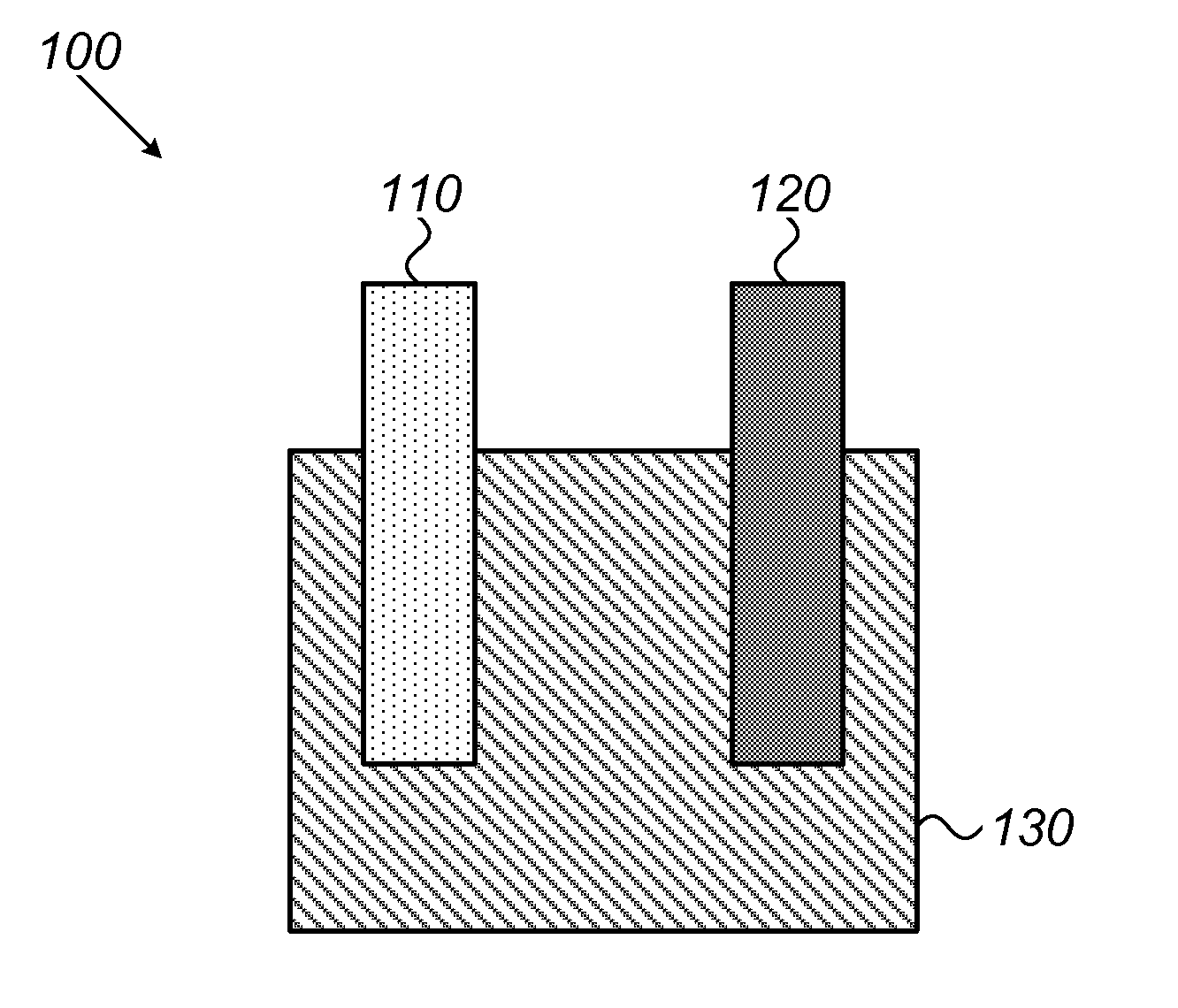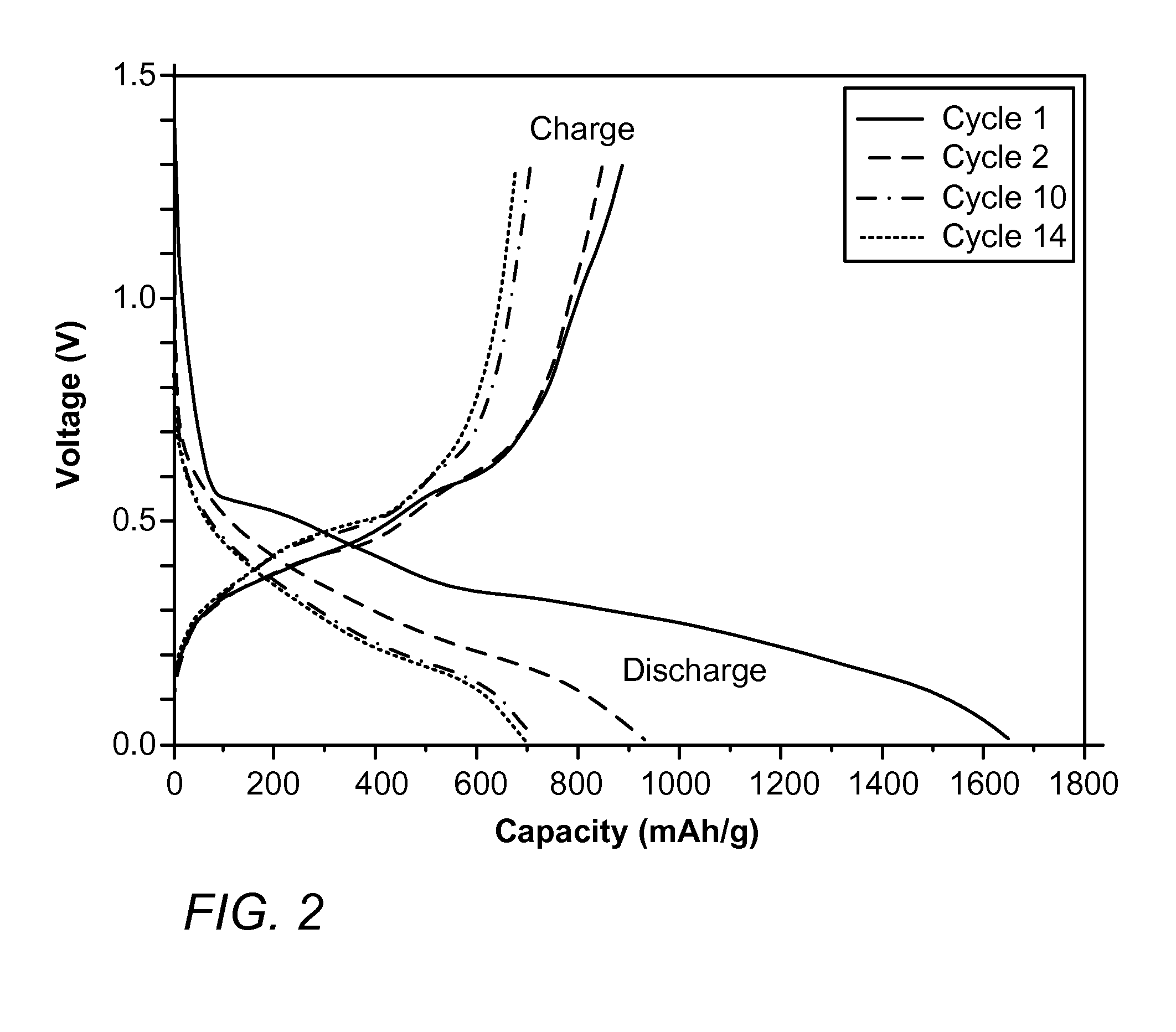Anodes comprising germanium for lithium-ion devices
a technology of germanium and anodes, which is applied in the direction of batteries, cell components, electrochemical generators, etc., can solve the problems of accelerating the degradation of battery constituents, slow charging and discharge process of batteries, and degrading the chemical compounds inside batteries
- Summary
- Abstract
- Description
- Claims
- Application Information
AI Technical Summary
Benefits of technology
Problems solved by technology
Method used
Image
Examples
examples
[0034]Reference is made to FIG. 2 presenting first-cycle charge-discharge curves of an exemplary lithium-ion half-cell for a germanium-based anode containing boron and tungsten according to some embodiments of the invention. The voltage of the half-cell is presented as a function of the charge values in mAh / g. The exemplary anode material included (in weight percentage from the total weight of the anode) 69% Ge, 3% C, 10% W, 5% B, 10% binder and 3% conductive additives (Ge0.69C0.03W0.10B0.050Binder0.1ConductiveAditive0.03). The as-milled Ge / C / W / B alloy (i.e. the active material) included 79% Ge, 3% C, 12% W and 6% B weight percent of the total weight of the alloy (Ge0.79C0.03W0.12B0.06). Looking at the graphs of FIG. 2, the first charge yielded 1,705 mAh / g, and the discharge produced 913 mAh / g, resulting in a 53.5% first-cycle efficiency. The first-cycle efficiency is defined as the first discharge yield divided by the first charge yield. The first charge capacity is much higher tha...
PUM
| Property | Measurement | Unit |
|---|---|---|
| particle size | aaaaa | aaaaa |
| particle size | aaaaa | aaaaa |
| weight ratio | aaaaa | aaaaa |
Abstract
Description
Claims
Application Information
 Login to View More
Login to View More - R&D
- Intellectual Property
- Life Sciences
- Materials
- Tech Scout
- Unparalleled Data Quality
- Higher Quality Content
- 60% Fewer Hallucinations
Browse by: Latest US Patents, China's latest patents, Technical Efficacy Thesaurus, Application Domain, Technology Topic, Popular Technical Reports.
© 2025 PatSnap. All rights reserved.Legal|Privacy policy|Modern Slavery Act Transparency Statement|Sitemap|About US| Contact US: help@patsnap.com



